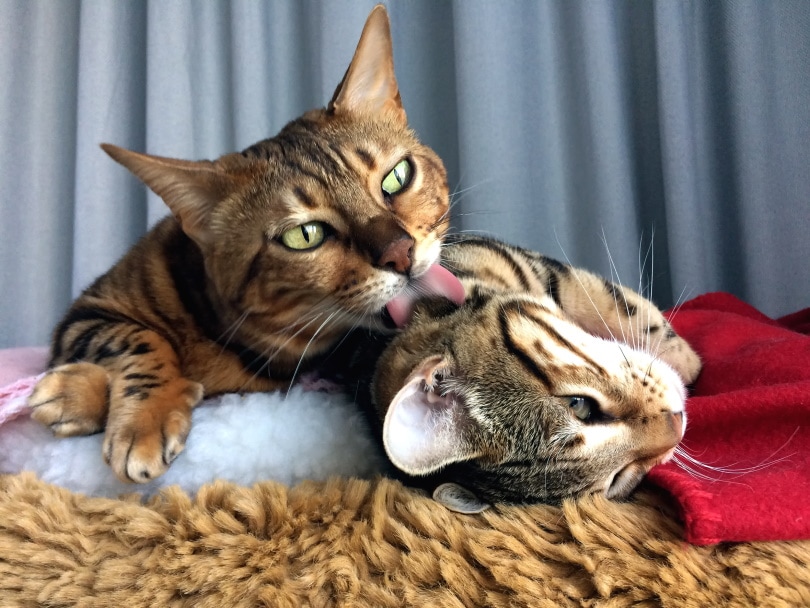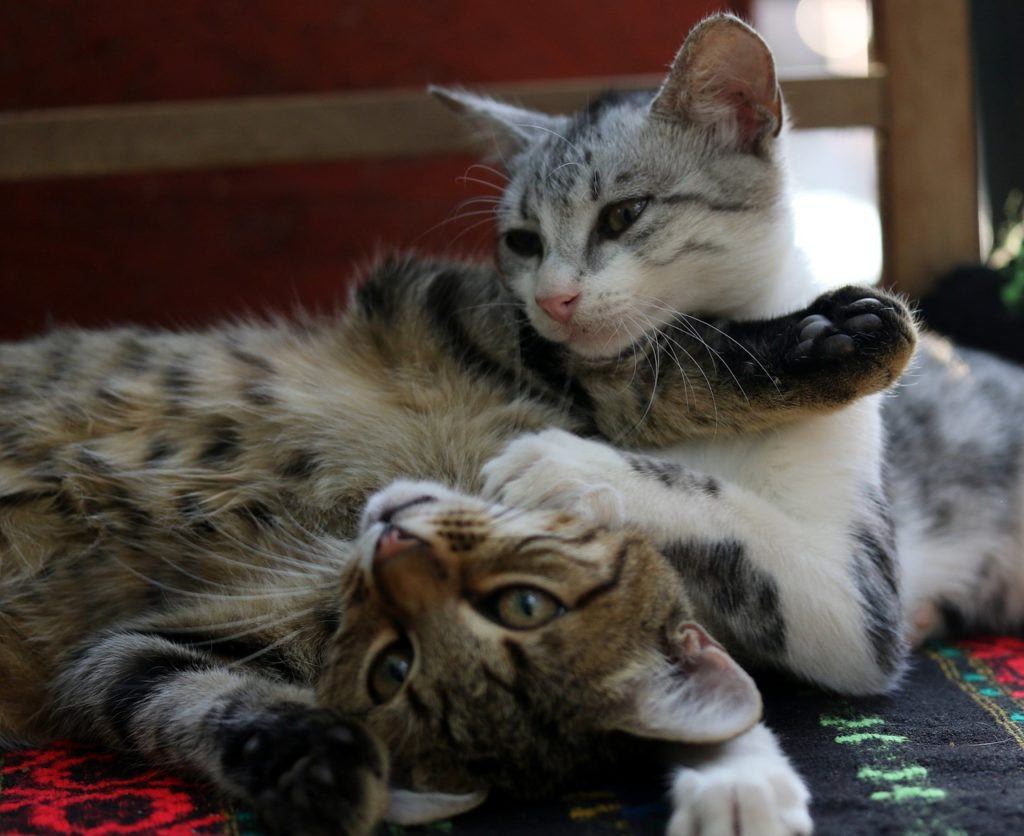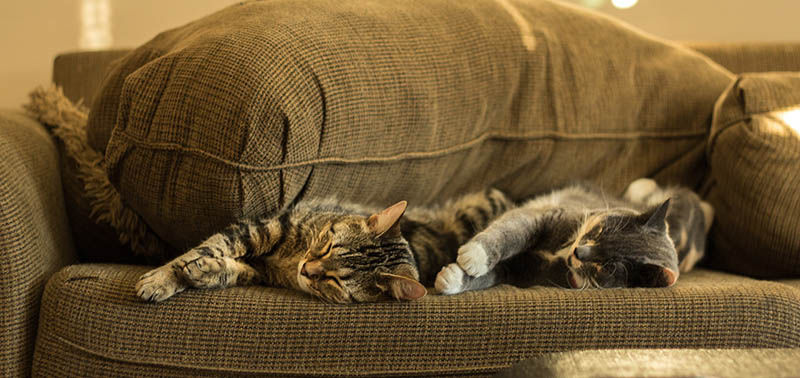When two animals first meet, there can be a mix of emotions. Cats are known for wearing their hearts on their sleeves and it’s easy to tell when they are uncomfortable, scared, or not feeling well. Their body language speaks volumes.
At first, your cats may hiss, growl, swat, and show other signs of being unhappy with the new addition. But don’t worry, they will eventually warm up to each other and become friends (hopefully). Here are some signs to look for to know if your cats are starting to get along.
Signs That Your Cats Are Getting Along
1. Relaxed Body Language
When a cat is upset, they make it known. Their ears go back, their pupils dilate, and they may vocalize. Some cats may run and hide, while others will stand their ground. However, as they start to warm up to each other, their body language will change.
You will notice a more relaxed demeanor. They won’t seem tense anymore and will move around with their usual happy strides. They won’t be in a hurry or on edge. And this is just the beginning!
Soon, they will be comfortable rubbing and bumping against each other, sometimes forgetting that the other cat is even there.
2. Grooming Each Other

Grooming is a clear sign that your cats are starting to get along. This behavior is instinctual and is used in the wild to show affection and communication between felines. Communal grooming, also known as allogrooming, is a way for cats to bond and help each other stay clean.
Cats spend a significant amount of time grooming themselves, but when they groom each other, it shows their bond and helps their new friend stay healthy. Cats know that some areas are hard to reach during grooming, so they may help each other out.
3. Cuddling Together
Cuddling is a sure sign that friendship is forming. If you see your cats snuggled up in front of a sunny window or piled together on the couch, they are getting to know each other.
Cats cuddle to seek warmth and a sense of security. This behavior starts early in kittenhood and can continue into adulthood. If you’re watching TV or reading before bed, try to get both cats to join you so you can give them equal attention. This may help speed up the bonding process. You could also try giving them attention at the same time to act as a mediator.
4. Playing Together

Playing and aggression can look very different, but it can also be confusing. Have you noticed your cats chasing each other around the house or getting frisky when everyone is asleep? This could be a sign that they are bonding.
Things can get a little heated during playtime, but it’s a normal part of a cat’s daily routine. It’s a healthy way for them to release pent-up energy and avoid any potential conflicts. They may kick, growl, taunt, scratch, ambush, and stalk each other like wild cats. Sometimes, they may even switch roles, with one being the predator and the other being the prey.
Playing together is a great way for cats to bond and strengthen their relationship. So don’t be alarmed if you see them roughhousing, it’s just a sign that they are getting along.
By paying attention to these signs, you can tell if your cats are starting to get along. Remember to be patient and give them time to adjust to each other. With a little love and attention, they will become the best of friends in no time.
187-245 162 0 260 204 260 344zm-260 0c0 56-45 101-101 101s-101-45-101-101 45-101 101-101 101 45 101 101zm-260 0c0 56-45 101-101 101s-101-45-101-101 45-101 101-101 101 45 101 101zm1300 0c0 56-45 101-101 101s-101-45-101-101 45-101 101-101 101 45 101 101zm-650 0c0 56-45 101-101 101s-101-45-101-101 45-101 101-101 101 45 101 101z”> Preserve the cats separated in several rooms, with their very own litter bins, meals, and water bowls. This may assist them really feel extra snug and fewer threatened by the opposite cat’s presence.
